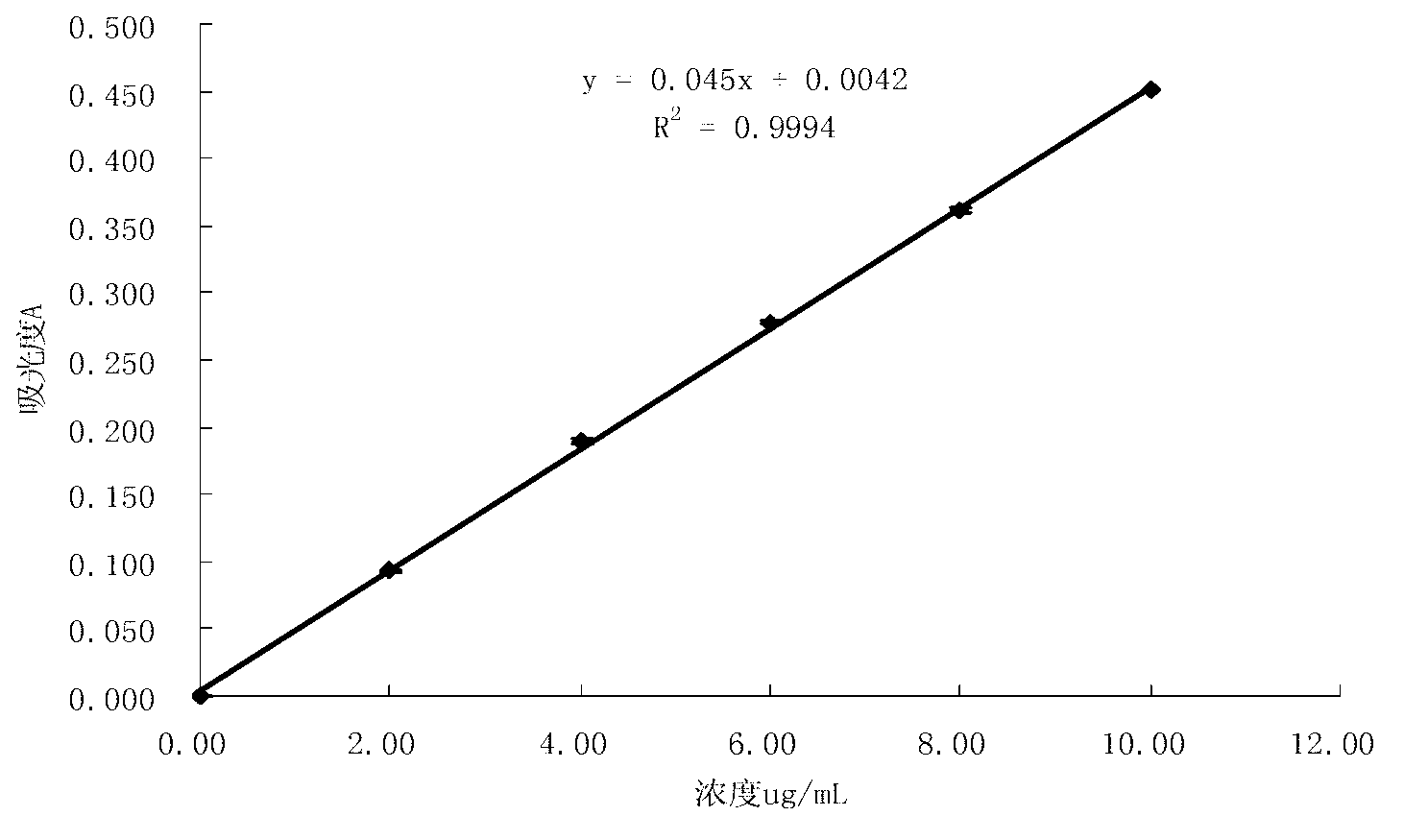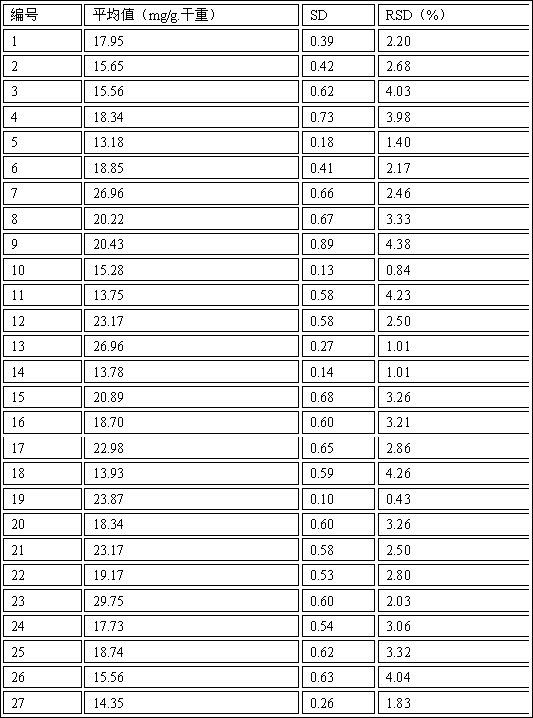Method for quickly determining tannin content in mulberry leaves
A technique for rapid determination of medium tannins, applied in the preparation of test samples, measurement of color/spectral properties, etc., which can solve the problems of many repetitive processes, low extraction efficiency, and long measurement time.
- Summary
- Abstract
- Description
- Claims
- Application Information
AI Technical Summary
Problems solved by technology
Method used
Image
Examples
Embodiment 1
[0020] Embodiment 1: the preparation of reagent
[0021] (1) Folir-Denis reagent: Weigh 100g of sodium tungstate and 20g of phosphomolybdic acid into a 1000mL flask, add 750mL of water to dissolve, and then add 50mL of phosphoric acid. Connect the condensing device, heat and reflux on the boiling water bath for 2h, cool to room temperature, add water to make up to 1000mL to obtain the Folir-Denis reagent, and store it in a brown bottle for later use.
[0022] (2) Tannin standard solution: Weigh 0.0100g of tannin acid, add a small amount of water to dissolve it, transfer it to a 100ml volumetric flask, add water to mix well and set the volume to 100ml to obtain a tannin standard solution, save it for later use, and the concentration of tannin is 0.1 mg / mL.
[0023] (3) Saturated Na 2 CO 3 Solution: weigh 240g anhydrous Na 2 CO 3 , add 1200mL of water, stir and dissolve evenly in a water bath at 50°C, let stand for 24h, filter, and the obtained filtrate is saturated Na 2 C...
Embodiment 2
[0024] Embodiment 2: the drafting of tannin standard curve
[0025] Take 6 50mL volumetric flasks, add 30mL distilled water respectively, then draw 0.0mL, 1.0mL, 2.0mL, 3.0mL, 4.0mL, 5.0mL of tannin standard solution into the volumetric flasks, add 2.5mL of Folir-Denis reagent and saturate Sodium carbonate solution 5.0mL, add water to make up to 50mL (corresponding to the concentration of tannin is 0.0μg / mL, 2.0μg / mL, 4.0μg / mL, 6.0μg / mL, 8.0g / mL, 10.0μg / mL), Mix well, let it stand for 30 minutes, adjust to zero with a blank, measure the absorbance at 750nm, and obtain a standard curve (such as figure 1 shown).
Embodiment 3
[0026] Embodiment 3: the mensuration of tannin in the fresh mulberry leaf:
[0027] (1) Drying of mulberry leaves: Wash the fresh mulberry leaves, dry them in an oven at 80°C, crush them into mulberry leaf powder, and store them in sealed bags at room temperature for later use.
[0028] (2) Ultrasonic extraction of tannins in mulberry leaves: Take 0.5g of mulberry leaf powder in a 100mL glass bottle with a blue cap, add 12.5mL of ethanol solution with a mass ratio concentration of 65%, cover the bottle cap and put it in an ultrasonic cleaner. Extract at 120W ultrasonic power and 65°C for 15 minutes; take out the glass bottle with blue cap, filter, and save the filtrate for later use; add 12.5mL of ethanol solution with a mass ratio concentration of 65% to the residue and repeat the ultrasonic extraction under the same conditions to obtain the filtrate, and repeat the extraction in this way 3 times, the filtrates were combined and the volume was adjusted to 50mL, and the extrac...
PUM
 Login to View More
Login to View More Abstract
Description
Claims
Application Information
 Login to View More
Login to View More - R&D
- Intellectual Property
- Life Sciences
- Materials
- Tech Scout
- Unparalleled Data Quality
- Higher Quality Content
- 60% Fewer Hallucinations
Browse by: Latest US Patents, China's latest patents, Technical Efficacy Thesaurus, Application Domain, Technology Topic, Popular Technical Reports.
© 2025 PatSnap. All rights reserved.Legal|Privacy policy|Modern Slavery Act Transparency Statement|Sitemap|About US| Contact US: help@patsnap.com


